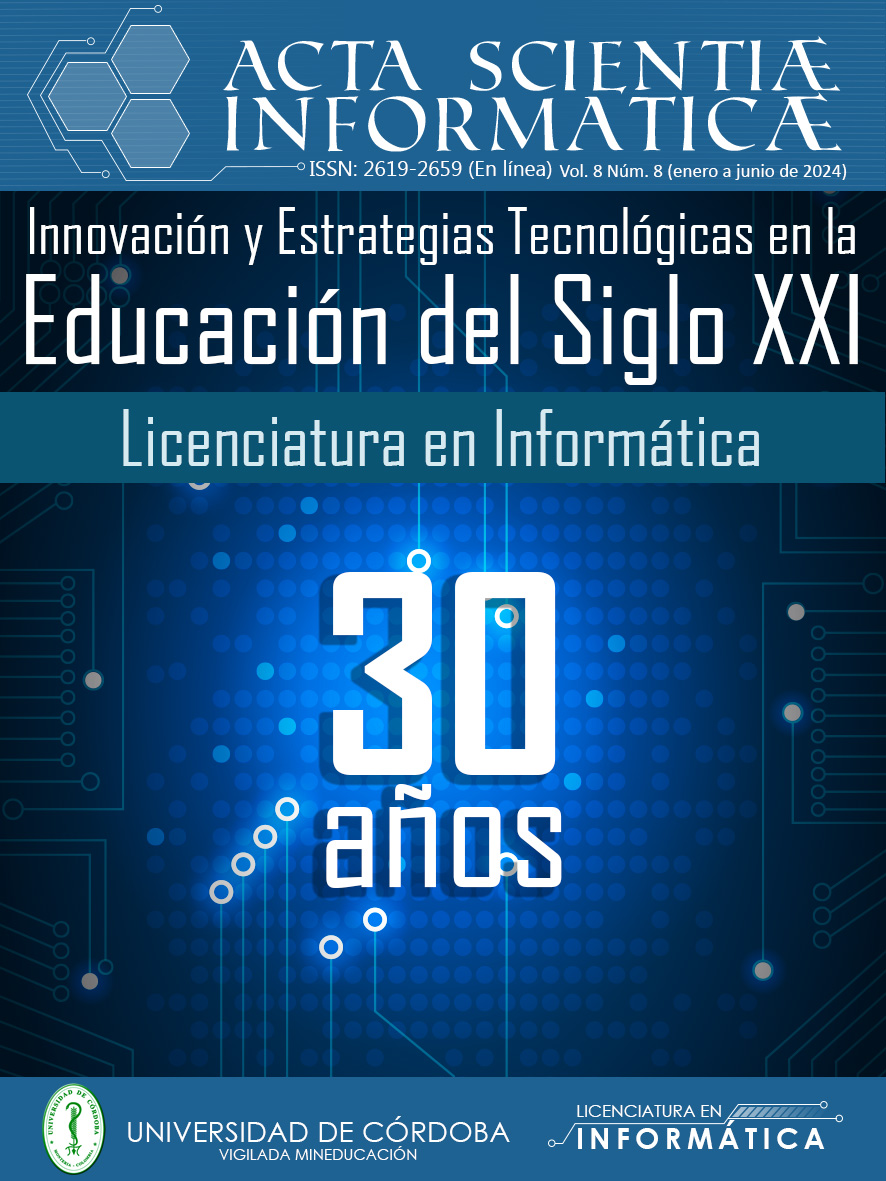REALIDAD AUMENTADA EN EL AULA DE QUÍMICA: ESTRATEGIA MULTIMEDIA PARA MEJORAR LA COMPRENSIÓN DE COMPUESTOS EN ESTUDIANTES DE SECUNDARIA
REALIDAD AUMENTADA EN EL AULA DE QUÍMICA: ESTRATEGIA MULTIMEDIA PARA MEJORAR LA COMPRENSIÓN DE COMPUESTOS EN ESTUDIANTES DE SECUNDARIA
Show authors biography
This study addresses the problem of demotivation and difficulty in understanding chemical compounds among high school students. Design-based research was used in a population of 10th grade students from the San José de Montería Educational Institution, and the sample was the 10th grade course1. The central objective was to optimize the learning process through the application of Augmented Reality (AR) as a pedagogical strategy. The comprehensive methodology analyzed the educational conditions and the needs of students and teachers for the effective implementation of AR. The results highlight the effectiveness of AR in improving the understanding of chemical compounds, observing notable improvements in knowledge retention and a considerable increase in students' interest in the topic. However, challenges were identified such as the need for teacher training and ensuring equitable access to technological devices and resources.
This study highlights the transformative potential of AR in secondary chemistry education, emphasizing the importance of preparation and resources for its effective implementation, with educational and technological implications, supporting future research.
Article visits 13 | PDF visits
Downloads
- Fernández López, J. A., & Moreno Sánchez, J. I. (2008). La química en el aula: entre la ciencia y la magia.
- Cruz-Perez, J. (2020). Realidad Aumentada Como Estrategia Didáctica Para el Aprendizaje Inicial de la Química en Estudiantes del Grado Décimo. Universidad de Santander.
- Brown, A. L. (1992). Design experiments: Theoretical and methodological challenges in creating complex interventions in classroom settings. Journal of the Learning Sciences, 2(2), 141-178. https://doi.org/10.1207/s15327809jls0202_2
- Nieveen, N., McKenney, S., & Akker, V. (2006). Educational design research. Educational design research, 151-157
- A. Di Serio, M.B. Ib anez, and C.D. Kloos, “Impact of an Aug- ~ mented Reality System on Students Motivation for a Visual Art Course,” Computers & Education, vol. 68, pp


